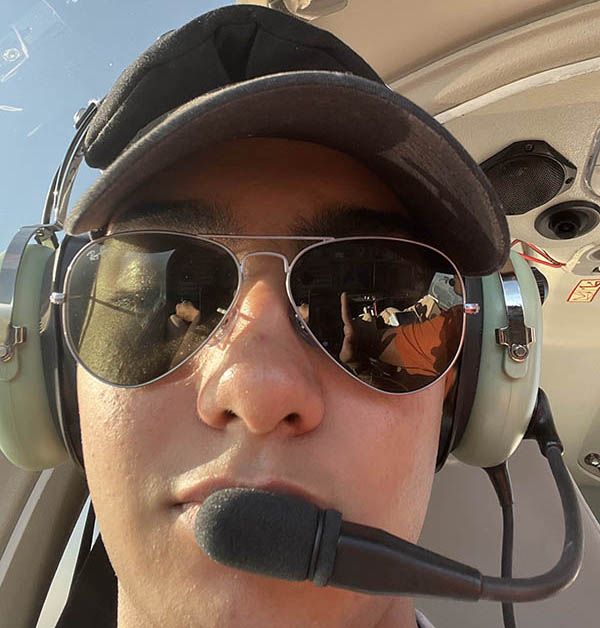 Do you want to help your child get ahead of the curve and a jump start on life? It’s not a question of if you want your child to succeed; it’s a question of how you can help. There has been remarkable progress shown with children who use the abacus and it’s not just with mathematics either. Children who are abacus students go on to have better confidence and can understand more about other subjects and studies.
Do you want to help your child get ahead of the curve and a jump start on life? It’s not a question of if you want your child to succeed; it’s a question of how you can help. There has been remarkable progress shown with children who use the abacus and it’s not just with mathematics either. Children who are abacus students go on to have better confidence and can understand more about other subjects and studies.
Mental Math is Mental Abacus
What do you think of when you hear “mental math?” It’s something like adding, subtracting, multiplying, and dividing in your head, right? Yes, mental math is exactly as it sounds, it is being able to do arithmetic in your head without the use of a calculator or pencil. Most people assume mental math is simple arithmetic, like 20+15 or 30-5 or 5x6 or 100 ÷ 4, but actually mental math experts can compute four and five large numbers in their head in seconds, and even more! The key is the abacus. When a child is a mental abacus expert, they are a mental math expert too.
Check out this video of one of our students doing amazing arithmetic in his head! 6 Year Old Does Mental Math
As a mental math expert, a child will advance quickly in school. They are able to do large calculations in their head with very little effort so they can spend more time tackling harder problems. These problems are most often considered “advanced” for their grade. Because they are advanced problems, they will continually be ahead of their peers.
How to Help Your Child be a Mental Abacus Expert
- First thing’s first: Get an Abacus. If your child does not know the abacus by now, they need to learn. Genie Academy teaches abacus to students as young as 3 years old. When a child learns the abacus, the scary or uncertain abstract concept of numbers becomes easy and concrete. Here at Genie Academy we teach your child how numbers work together and your child will understand numbers in a new way when they see, feel, and move them on the abacus. They will see and move them in their mind and become a mental math expert in no time.
- Make it routine: Children thrive off a schedule and so do their brains. If there is not consistency in their mental math practice, it will soon fall away and your child’s understanding of mental math will also. Every day, for five minutes a day, practice the abacus. Do it at breakfast, or before dinner. Do it after study time or before bed. The key thing to remember is that it needs to be consistent. Many parents keep a little checklist on the fridge or message board and put a tick or sticker after they do mental abacus practice with their child. Sometimes after so many checks or stickers the child gets a little reward. This is a great way to incorporate Genie Academy Mental Magic practice and build that confidence and ease with numbers in your child
- Make it fun: Many of our teachers hear at Genie Academy agree that making mentals fun is a part of the magic. When children have fun while learning, they retain what they learn better and longer. One teacher, Ms. Erin, uses “crab hands” so the child can have their fingers up like pinchers. The child moves the beads up and down their mental abacus with their crab hands and understands how the mental abacus works. One of my students likes to make growling sounds when he takes away the beads like he’s feeding them to a big hungry monster. He makes the sound for every bead he takes away and it helps him keep track of how many beads are left. Another teacher, Ms. Niralee, likes to get imaginative with her students. You can hear her say “Okay close your eyes and picture the abacus, picture the beads, they are a gross green color like snot,” or “they are pink and fluffy and sticky like yummy cotton candy” and her students giggle and smile while they do their mental abacus.
- From physical to mental abacus: For some students, simply imagining the abacus does not come easy to them. They must see the beads and the rods in front of them. However, they can still practice their mentals. If your child has trouble visualizing the abacus, let them see their own abacus but still move the beads in their head. This way they can start to picture the abacus in the head while still keeping the real image in front of them. In no time at all, they will be doing mentals anywhere, anytime, and without the physical abacus.
- Say it Out Loud: When we describe what we are doing, even the simplest of things, they become clearer and easier to understand. The same goes for the mental abacus. Your child already knows their buddies by the time they start mentals. As they are going through the steps of their mental abacus in their head and if it is getting difficult to keep track of the beads, have them say out loud what they are doing. Have them say it step by step. “Bring down the 5 take away 3 beads” or “add the 10 take away 4.” The simple act of saying it out loud is a great tracking tool because they would have heard themselves say it and catch themselves if they made a mistake.
- Do it with your child: Children always want to do what their parents are doing. They want to be like mom and dad. When your child sees you doing mentals and having fun with it and getting better at it, they will want to do it too. The added benefit is that Mental Magic helps children and adults. There are teachers and parents here who will say that because they know how to do mentals, thing come easier to them. If you are not sure how to do mentals, ask your child’s teacher. We are always happy to help!
The benefits of learning the abacus and becoming a mental abacus expert are everlasting. I was able to get a degree in theoretical Mathematics from Johns Hopkins University because I had a well-developed sense of pattern recognition and number relations. These are the core values of abacus learning. Being able to master the mental abacus will give your child a sense of pride, reduce their math anxiety, and elevate them in all areas of study. Don’t wait another day to become Mental Abacus Expert!





